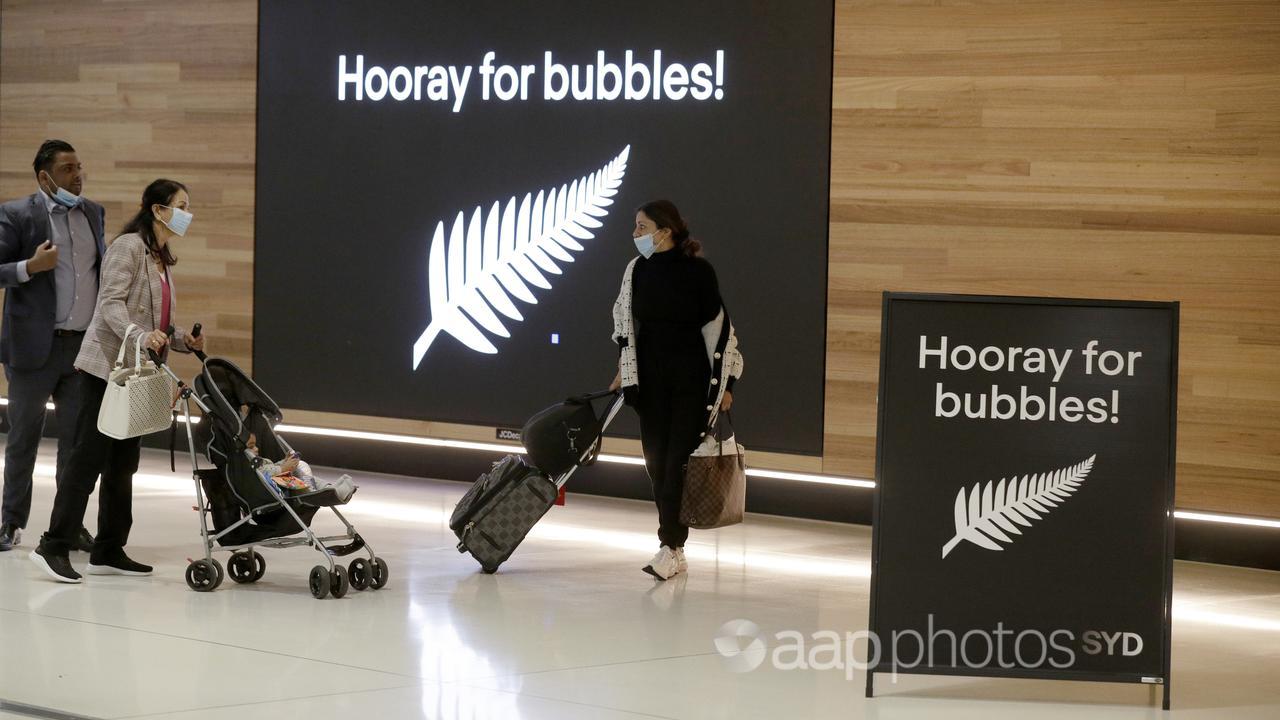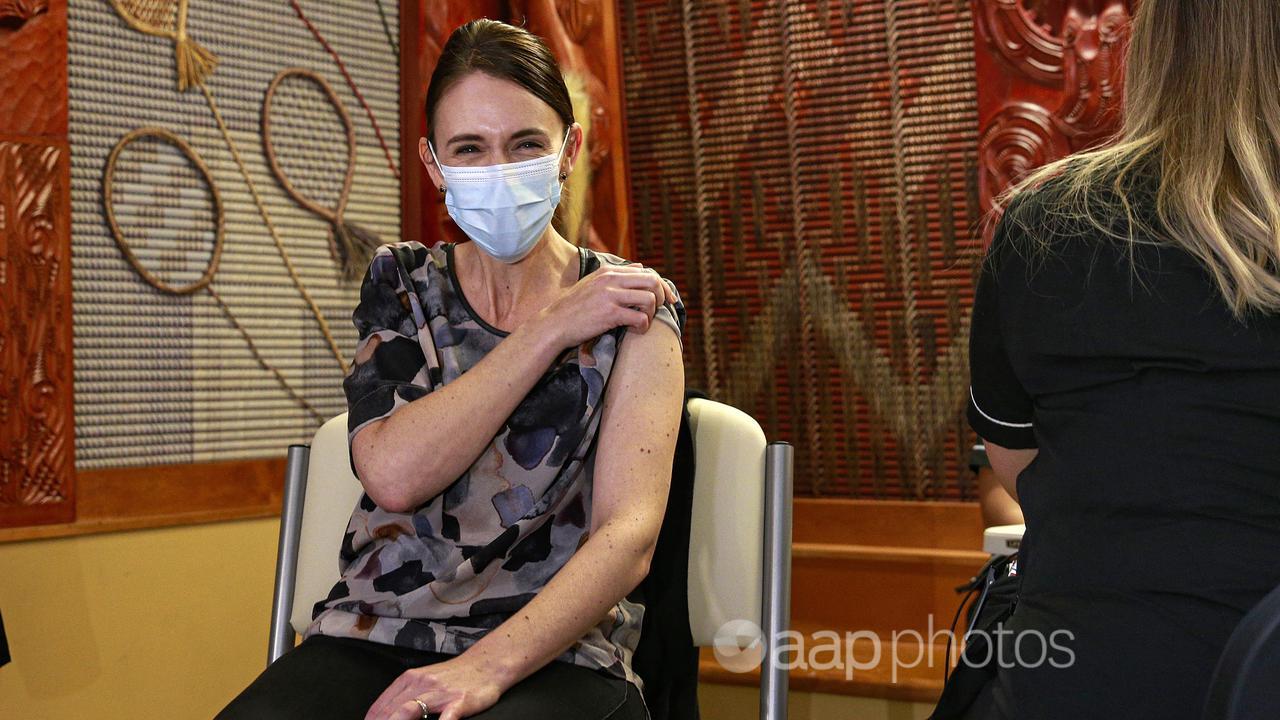An Australian legal rights advocacy group claims the spread of COVID-19 in New Zealand was caused by the vaccine rollout.
Experts and official data confirm the claim is false and that the spread was the result of the community transmission of the Omicron variant.
The Latin phrase, Post hoc ergo propter hoc, is the fallacy that because an event occurred after another event, the second event must have been caused by the first. This is behind the claim made in a Facebook video by Mike Palmer from the Know Your Rights Group.
Mr Palmer references a Guardian article from September 12 on NZ dropping its mask and vaccine mandates. In the video, he reads the article, emphasising a paragraph that says: “New Zealand, which once eliminated the virus through the toughest pandemic rules in the world, has made relaxations similar to Australian or European conditions” (video mark 1min).
He goes on to say: “They’d all but eliminated COVID, but of course then it went completely rampant. Not because they weren’t using masks, not because they weren’t locking people down, but because everyone went and got jabbed.”

Health experts say the claim is nonsense.
NZ’s so-called elimination occurred when Prime Minister Jacinda Ardern announced on June 8, 2020 that with no new community transmissions in 17 days and all patients fully recovered, “we are confident we have eliminated transmission of the virus in New Zealand for now”.
New Zealand’s vaccine rollout didn’t begin until eight months later, on February 19, 2021, when there hadn’t been any new COVID-19 infections reported in the previous 24 hours despite tens of thousands of tests.
Six months later on August 17, NZ detected its first community case of the Delta variant of COVID-19, when only 18 per cent of the population was vaccinated. An immediate national lockdown was imposed. In an update from July 2022, the Ministry of Health said the Delta variant has not been detected in NZ since March 2 – which it links to the dominance of the Omicron variant, first detected in November 2021.
The “All time” graph on this Stuff breakdown of COVID-19 data shows NZ’s rapid rise in case numbers occurred from January 2022 (when there was a seven-day average of roughly 50 cases) to early March, 2022, when the seven-day average peaked at 20,777 cases. This was more than a year after the vaccine rollout began, and coincided with the spread of Omicron.
Professor Nick Wilson of the University of Otago’s Department of Public Health told AAP FactCheck the Omicron outbreak in NZ since February this year was because the virus got through border controls and then spread in the community – not because of vaccination.
“The NZ government had wisely decided that the previous elimination strategy was no longer appropriate – especially given that Omicron was more infectious than previous strains and by early this year the vaccination coverage of the population was relatively high,” he said in an email.
Prof Wilson said the claim in the video that vaccination had caused the coronavirus to go rampant was “ridiculous”.
“In fact the best available estimate is that COVID-19 vaccinations have saved 14 million lives around the world in the first year that these were available,” he said.
“NZ has one of the lowest rates of COVID-19 deaths in the OECD – partly because when Omicron did arrive – most people were already vaccinated.”
He cited a mathematical modelling study published in The Lancet in September that found vaccinations prevented 14.4 million deaths from COVID-19 in 185 countries and territories between December 2020 and December 2021.

Professor Rod Jackson, an epidemiologist at the University of Auckland, told AAP FactCheck the claim in the video was “absolute nonsense”.
“One key issue is that NZ has really only had Omicron which is much more contagious than any previous COVID variant and the vaccines are not particularly effective at preventing Omicron infection,” Prof Jackson said in an email.
“Vaccination is the reason NZ has had one of the world’s lowest rates of COVID mortality.”
This is supported by official statistics showing NZ’s case fatality rate was among the world’s lowest at 0.1 per cent. This compares to the US at 1.1 per cent and the UK at 0.9 per cent.
Michael Baker, professor of public health at Otago University, said countries like NZ, Australia and Singapore, which largely eliminated COVID-19 transmission for almost two years (2020-21), had very few deaths from the virus during that period.
“Vaccines were rolled out and achieved high coverage during 2021 in those countries and were not associated with many COVID-19 deaths,” Prof Baker said in an email.
“Mortality from COVID-19 in countries like NZ, Australia, and Singapore followed widespread transmission in 2022, driven by the arrival of the Omicron variant in particular.”
AAP FactCheck has debunked similar claims attempting to link COVID-19 cases with vaccination here, here, here and here.
The Verdict
The claim that the rollout of vaccines in New Zealand resulted in rampant infections is false. The rise was associated with the breakout of the Omicron variant in NZ in early 2022, not because of the rise in vaccinations.
False – The claim is inaccurate.
* AAP FactCheck is an accredited member of the International Fact-Checking Network. To keep up with our latest fact checks, follow us on Facebook, Twitter and Instagram.
All information, text and images included on the AAP Websites is for personal use only and may not be re-written, copied, re-sold or re-distributed, framed, linked, shared onto social media or otherwise used whether for compensation of any kind or not, unless you have the prior written permission of AAP. For more information, please refer to our standard terms and conditions.


















